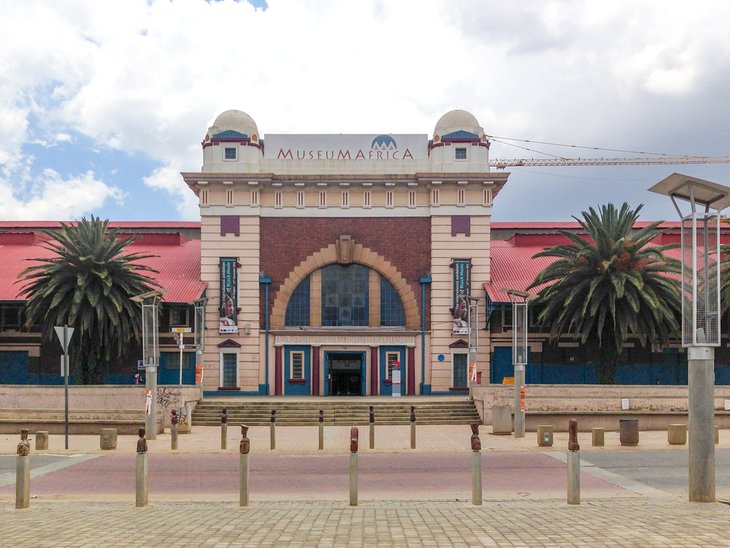The Main Principles Of Johannesburg North Attractions
Wiki Article
Some Known Facts About Johannesburg North Attractions.
Table of ContentsThe Main Principles Of Johannesburg North Attractions How Johannesburg North Attractions can Save You Time, Stress, and Money.Examine This Report about Johannesburg North AttractionsThe 7-Minute Rule for Johannesburg North AttractionsThe Buzz on Johannesburg North AttractionsWhat Does Johannesburg North Attractions Do?
The city grew on the side of the Witwatersrand Key Reef, a below ground stratum of gold-bearing quartz-silica conglomerate that arcs for hundreds of miles below the Highveld - Johannesburg North attractions. Many of the gold mines in the city discontinued procedure in the 1970s, yet in its day the Witwatersrand gold market accounted for even more than 40 percent of the globe's annual gold manufacturing.Johannesburg has a temperate environment. Summer temperature levels balance regarding 75 F (24 C); winter season temperature levels balance concerning 55 F (13 C) and only occasionally dip listed below cold. The city delights in about eight hours of sunshine per day in both winter season and summertime. Rainfall averages concerning 28 inches (700 millimetres) per annum, however the total differs substantially from year to year.
What rainfall the city gets drops nearly solely in the summertime months, typically in magnificent late-afternoon electric tornados. Air contamination poses a considerable issue, especially in the wintertime months, when thermal inversions hamper the westward circulation of air from the Indian Ocean. Air pollution is most severe in the densely resolved Black towns on the city's periphery, where several homeowners still rely upon coal for fuel.

Everything about Johannesburg North Attractions
The equilibrium of the city is inhabited by whites. Accommodation differs in personality and quality.Physical development, although rather restricted by transportation, continued promptly as migration to South Africa, and Johannesburg specifically, increased considerably. This problem was solved in the 1930s when the auto was introduced in automation to South Africa. Autos were, essentially, constrained to the affluent, and permitted them to transfer to the north of the city and commute into the centre.
Most bad suburbs were combined, with inadequate blacks and whites cohabiting, although the wealthy residential areas were typically booked for whites. This altered with the election of the National Event in the 1948 elections, who started to formalise the system understood as discrimination. Apartheid formally marked which suburban areas each anchor race can reside in under the Team Areas Act.
The previous system of eleven numbered areas was reorganised in 2006. Marshalltown, as seen from the top of the Carlton Centre. The M1 and M2 run behind the buildings, and the southern suburban areas extend past the freeway limit. The central city of Johannesburg lies within the city's Area F. The approximated population of the area is 200,000, [] The number of people living in the inner city on a casual basis is unidentified, as lots of are unlawful immigrants. The majority of higher-income locals and white individuals have actually transferred to the north suburbs and have actually been changed by lower-income black people. The unemployment, education and learning, and age accounts of the location are all unidentified, due to the difficulty of obtaining dependable info concerning the location.
6 Easy Facts About Johannesburg North Attractions Described
Centred on the CBD, the region includes the residential areas of Yeoville, Bellevue, Troyeville, Jeppestown, and Berea to the east. To the west it infects Pageview (Johannesburg North attractions) and Fordsburg. There are small industrial parks to the south, such as City West-Denver and Benrose. Around 800,000 commuters pass through the internal city everyday, and it operates as a local shopping node for visitors from the southerly suburbs. Yeoville and Bellevue have a mix of apartment or condo structures and single property units on small great deals. The area is located on a hilly divide that runs from eastern to west.
The Main Principles Of Johannesburg North Attractions
R. Tambo International Airport). The eastern suburbs are some of the oldest areas of Johannesburg, there are huge neighborhoods of Jewish and various other European histories, most of the populace is English original site speaking. There are three fairway along with a variety of safeguarded ridges with viewsites. There are numerous strong and up-market amusement and purchasing areas in the east such as the Eastgate Shopping Center and the Greenstone mall.Originally my response constructed to house male migrant employees, numerous have been enhanced as dwellings for couples and families. The suburban area was not traditionally allowed to produce employment centres within the area, so almost all of its residents are commuters to various other components of the city.
The Definitive Guide to Johannesburg North Attractions
The residential locations in the north residential areas are mainly formal, with no significant areas of informal housing, or real estate that does not have an irreversible framework. This is a recognized area, there is a fad of land use modification from property to industrial, particularly along main arterial roads and around well-known nodes.The location is well attached to road networks, particularly along the north-south axis developed by the M1 and N1. Roadways to the east and west are less well established, as there are no highways taking a trip in that direction. In the direction of the northern border of the city, the thickness of growth lowers, leaving large areas of untaught land around Midrand.
The Only Guide for Johannesburg North Attractions
The very first suburban area to the north of the internal city is Parktown, which is located on a hill ignoring the central city and Hillbrow. It has numerous well-off residents and Edwardian-design manors, along with the Education and learning and Medical campuses of the College of the Witwatersrand. The huge concrete Charlotte Maxeke Johannesburg Academic Hospital controls the skyline of Parktown.Report this wiki page